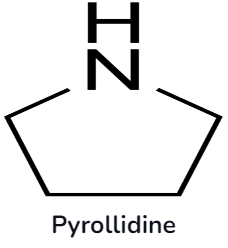Amines are ammonia derivatives. To put it another way, we can say Amine is an ammonia-derived molecule. Amines are organic nitrogen compounds that include a nitrogen atom with a lone pair. These are classified as functional groups. Amines are investigated in organic chemistry by replacing hydrogen atoms in amines with an aryl or alkyl group.
There is a structural difference between aliphatic and fragrant amines. Aromatic amines are amine compounds in which at least one of the aryl groups is linked to nitrogen. Aliphatic amines are amine compounds with just alkyl groups as a bonding partner for nitrogen. Their structural peculiarities determine their reactivity, acidity, and stability.
What Exactly are Aromatic Amines?
Aromatic amines are sometimes called “aryl amines”. At a minimum, one benzene ring is physically related to nitrogen in aromatic amines. They may be categorised as “primary”, “secondary”, or “tertiary” amines based on the range of groups related to the nitrogen atom.
Primary and secondary aromatic amines, such as aliphatic amines, can generate intermolecular hydrogen bonds. As a result, primary and secondary amine boiling points are more significant than those of tertiary amines. Heterocyclic, pyrrole, and pyridine are examples of aromatic amines.

Physical Properties of Aromatic Amines
Aromatic amines have their lone pair of electrons conjugated into the benzene ring, which reduces their capacity to form hydrogen bonds. As a result, the boiling points of these molecules are typically more than those of other molecules.
- The melting and boiling values of aromatic amines are greater than those of aliphatic amine compounds. It rises in percentage to the molecular mass.
- In comparison to n-hexyl amines, aniline is more water-soluble. Aromatic amines are only marginally soluble in water but dissolve entirely in organic solvents.
- Amines have a higher boiling point than analogous phosphine. However, their boiling point is lower than related alcohols. The characteristics of primary and secondary amines are influenced by hydrogen bonding. Under ordinary conditions, the associated methylamines and ethyl amines are gasses since methyl alcohol and ethyl alcohol are liquids. Similar to liquid amines, gaseous amines have a unique “fishy” odour, whereas liquid amines have a distinct ammonia odour.
- Aromatic amines have a foul stench. It’s a clear liquid or solid chemical with no colour. This oily liquid aniline is easily manufactured. Aromatic amines also become brown when exposed to light or air.
What Exactly are Aliphatic Amines?
Only alkyl groups and hydrogen atoms are directly linked to nitrogen in aliphatic amines. The number of alkyl groups in a compound might range from one to three. Primary amines, secondary amines, and tertiary amines are classified according to the number of connected alkyl groups. Only one alkyl group—1o—represents primary amines. Two alkyl groups—2o—represent secondary amines, and only three alkyl groups—3o—represent tertiary amines. Aliphatic amines have weak bases similar to ammonia.
The basicity rises because alkyl groups replace the hydrogen groups on the nitrogen atom. Primary and secondary amines are greater than tertiary amines. Heterocyclic amines are shaped, while nitrogen is one of the atoms in a ring. Aliphatic heterocyclic amines include piperidine and pyrrolidine.

Physical Properties of Aliphatic Amine
Here are some features of aliphatic amines:
- Aliphatic amines have a low boiling point.
- With increasing molecular mass, solubility decreases. The creation of H-bonds in organic solvents such as amines, benzene, and ether makes aliphatic amines water-soluble.
- Aliphatic amines have a distinct fishy smell. C1-C3 amine is a colourless gas at room temperature, but higher amines are liquids or solids.
Conclusion
The NH2 group is usually connected to a C6H5 group, an electron-withdrawing group, in aromatic amines. As a result, the lone pairs of electrons at N drops. Aliphatic amine compounds are, therefore, greater than aromatic amines. Chemical, pharmaceutical, rubber, plastics, textile, cosmetics, and metal industries use aliphatic amines. Intermediates, solvents, rubber accelerators, catalysts, emulsifiers, synthetic cutting fluids, corrosion inhibitors, and flotation agents are all examples of these compounds.
They are used in making rubber and reducing oils. They are also used as intermediates in azo dye manufacturing, and as insecticides. Aromatic amines are linked with bladder cancer.
 Profile
Profile Settings
Settings Refer your friends
Refer your friends Sign out
Sign out






